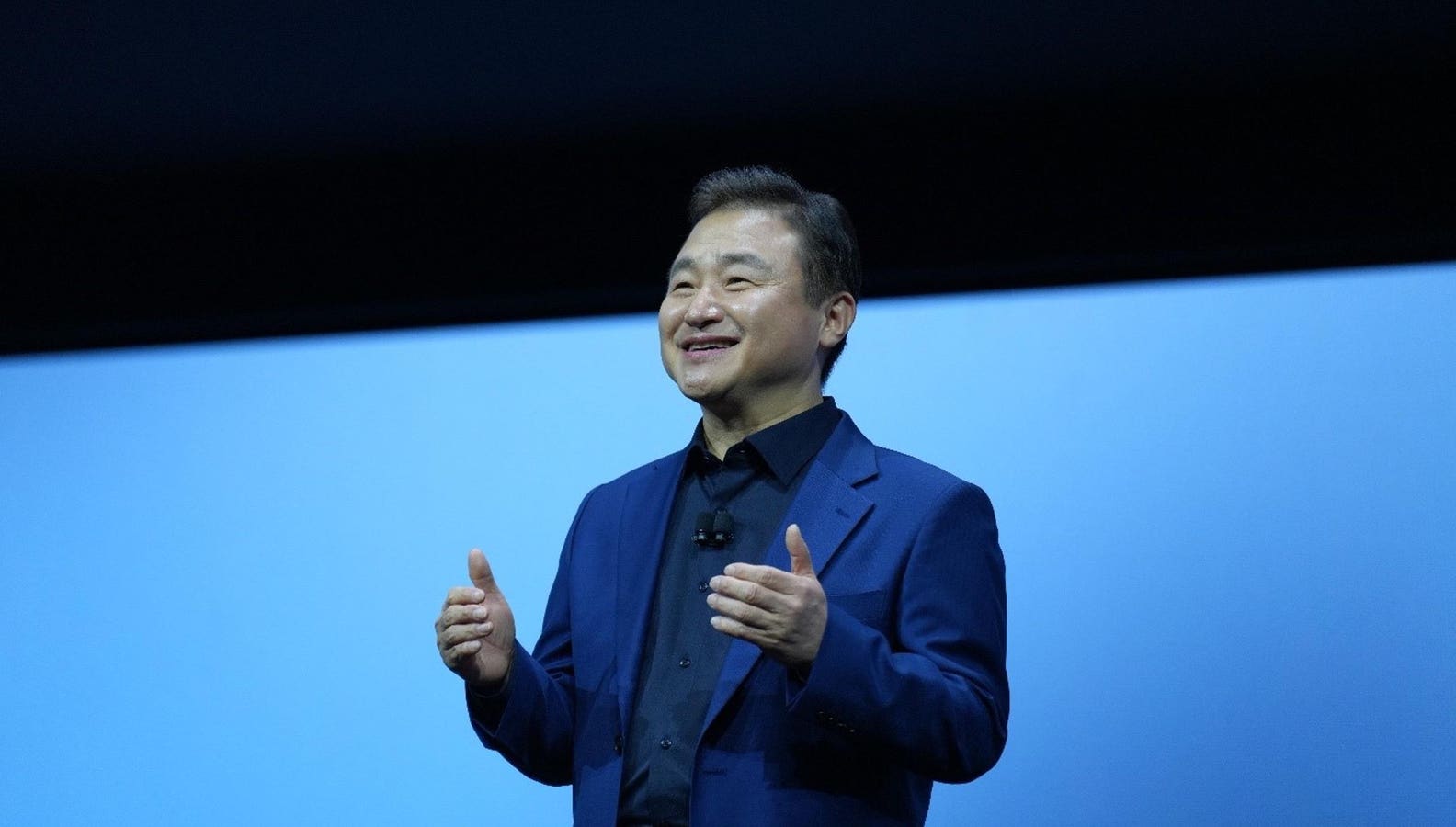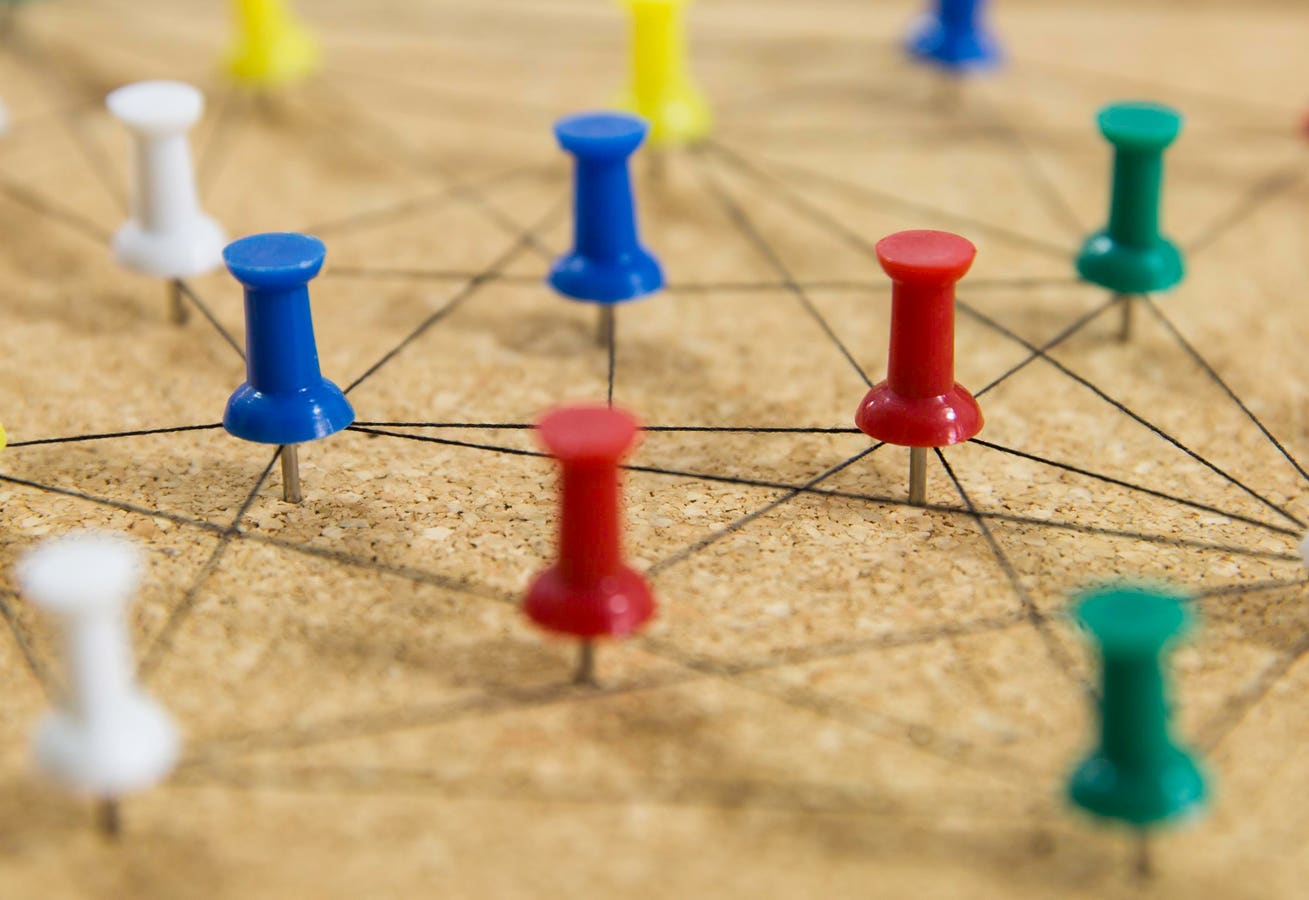Samsung’s head of device and mobile experience, TM Roh
This week’s Samsung Galaxy Unpacked event in Brooklyn saw the launch of the seventh generation of Samsung’s Galaxy Z foldable smartphones. After years when we’ve seen Samsung fall behind in a market niche that it essentially created, the new Galaxy Z 7 series announced this week finally brings the company back into contention as a maker of cutting-edge foldable phones.
While I try to maintain my objectivity as an analyst, it’s fair to say that I am both one of Samsung’s biggest fans and one of its biggest critics. As I said, Samsung in many ways created the foldable smartphone form factor with the Galaxy Z series, including the Z Fold and Z Flip. In 2019, the Galaxy Z Fold became the first commercially available foldable on the market, which was quickly followed by Huawei and many others. Samsung was also among the first to introduce a flip foldable; its first flip phone was announced in 2020, just before the Covid lockdowns. Samsung has iterated both of these products across several generations, but the company has ceded a lot of the market to the likes of Huawei, Oppo, Vivo, Xiaomi and even Motorola. Now it’s making a bid to regain its supremacy.
(Note: Samsung is a client of my firm, Moor Insights & Strategy.)
The Galaxy Z Fold7 — Bringing A Flagship ‘Ultra’ Model To Foldables
The Galaxy Fold line is Samsung’s premier foldable, with the biggest screens, fastest processors and now its slimmest design. I have long said that the Galaxy S25 Edge was an engineering exercise for the next generation of foldables, and I believe that assessment is validated in the Galaxy Z Fold7. While I personally don’t think that phone thickness is the most important metric, it does matter when it comes to foldables since you need to fold the phone and double its thickness. The new Z Fold7 is 4.2mm when unfolded, which is not much thicker than a USB-C port at 2.56mm. When you look at the USB-C port on the Z Fold7, you realize that there really isn’t much room left for slimming down without eliminating the port entirely.
On the Samsung Galaxy Z Fold7, there isn’t much room for slimming down further.
When folded, the Z Fold7 has a thickness of 8.9mm, which is a mere 0.7mm thicker than the Galaxy S25 Ultra. Honor’s Magic V5 is an impressive 8.8mm, which sets the standard for thinness among foldables by less than half the thickness of a razor blade. That said, many users have reported that the Magic V5 has a noticeable inner display crease; meanwhile, Samsung’s new Armor FlexHinge is thinner and lighter and uses a new multi-rail structure with a carbon fiber layer to improve durability and significantly smooth out the crease.
Samsung has also upgraded both the inside and cover displays on the Z Fold7. The new main screen is 11% larger than the previous generation at 8 inches (2184 x 1968) with a wider 6.5-inch (2520 x 1080) cover screen. (Both screens are 120-hertz.) This means that this phone looks and feels like a regular phone, but then you can unfold it and have effectively an 8-inch tablet without compromising on weight or thickness. That is the magic of building this new generation of foldables so thin, and why I believe the Z Fold7 is Samsung’s most competitive offering in the Fold line since the Z Fold. Samsung is also using Gorilla Glass Ceramic 2 on the cover screen and a 50% thicker (though still ultra-thin) glass for the inside display, both of which improve durability. The Z Fold7 also drops pen support, but given that the Z Fold series has never had an integrated pen, I’ve never bothered to use one with it.
Samsung also chose the Snapdragon 8 Elite for Galaxy processor, which keeps it in the same class of performance as the S25 Ultra. I will need to benchmark this one myself to see whether the thinness affects thermal performance, especially since cooling can add thickness and weight. The storage starts at 256GB paired with 12GB of RAM, with available upgrades up to 1TB and 16GB. The 16GB RAM option is only available in the 1TB model, which is the standard across many phones, but I will say that at a starting price of $2,000 it would be nice if the storage capacity started at 512GB. The first Z Fold shipped with 512GB of storage and 12GB of RAM, so I would expect that the world’s leading maker of RAM and storage could offer that as a competitive advantage.
Samsung also improved the camera on the Z Fold7 with the same 200MP main sensor that’s found in the S25 Ultra; the Z Fold7 also features a cut-out 10MP selfie camera, along with a 12MP ultrawide and 10MP 3x telephoto. This is absolutely where I think some S25 Ultra users might be disappointed with the lack of a 5x optical telephoto — and they would be right, although the 5x option would make the phone thicker and the camera bump even more pronounced, which Samsung clearly didn’t want to do. That said, I still believe Samsung needs to find a way to fit a 5x optical telephoto into its Fold phones to truly match the Galaxy S Ultra line, especially considering that many of its competitors have periscope cameras with accompanying camera bumps.
The Galaxy Z Fold7 compared to the S25 Ultra for thickness
Battery capacity on the Z Fold7 is the same as the Z Fold6, 4400 mAh, but the new model gets an hour more of video playback thanks to the upgraded Snapdragon 8 Elite processor. That said, Samsung should be looking at using silicon-carbon batteries, given that it has the smallest battery capacity of all the flagship foldables on the market by a considerable margin. Most of the competition is above 5000 mAh in capacity, and some go even further, like the Magic v5 with a whopping 5820 mAh. In general, we’ve seen this generation of batteries improve density by 20% while maintaining the same thickness, meaning that Samsung should be able to crack the 5000 mAh barrier without losing the phone’s thinness. Another thing to consider is that the Z Fold7 maintains the Z Fold6’s 25-watt charging speed, which is on par with the iPhone but lags significantly behind virtually every Android competitor, including Moto’s new Razr Ultra, which now features 68-watt charging. Even the S25 and S24 Ultra both offer 45-watt charging.
I also really like that Samsung continues to focus on software with the Galaxy Z series, especially to take advantage of the large display of the Z Fold7. The phone comes with the latest Google Android 16 and the new OneUI 8, which are both optimized for larger displays and multitasking. The increased focus on multitasking should cater to productivity-minded customers who come to the Fold family for better productivity on the go. Google’s Gemini Live and Circle to Search have both been enhanced for the Z series. Galaxy AI has also been enhanced for larger-screen experiences to obscure less of the application while enabling AI features. Samsung is also boosting security with Knox Enhanced Encrypted Protection. This is mostly to keep Samsung users’ data and interactions with AI on-device as much as possible.
The Galaxy Z Fold7 starts at $1,999 and will be generally available on July 25 in Jet Black, Blue Shadow, Silver Shadow and a Samsung.com exclusive Mint color. Most carriers are offering up to $1,000 off with a device trade-in, with T-Mobile requiring only a 24-month contract, while the others require a 36-month contract. All the carriers and Samsung are also offering storage upgrades to 512GB for free (a $120 value) for preorders. I believe that Samsung should further incentivize previous Fold owners to trade in for the Z Fold7, because they will be Samsung’s biggest champions and word-of-mouth advertisers. Plus, the Z Fold7 is by far the biggest improvement to the Fold series since the original Z Fold, and I think it should be made more attractive to more users.
Will Users Flip Out For The Z Flip7 And Z Flip7 FE?
The flip-foldable Z Flip7 and Z Flip7 FE are Samsung’s more accessible and mainstream foldables. This is Samsung’s first Flip FE; FE stands for Fan Edition, which is generally seen as a value version of the product with a lower cost and some dialed-down specs. With the Z Flip7, Samsung has finally reached display parity with its competition, namely Motorola. The Z Flip7 has a 4.1-inch cover display that Samsung calls the FlexWindow, which is bigger than the Moto Razr Ultra (4.0 inches), although the 6.9inch inside display is slightly smaller than the Razr’s 7-inch display. Samsung’s 4.1-inch screen also has a considerably narrower bezel. The Samsung’s 120-hertz refresh rate is also a bit slower than Moto’s 165-hertz refresh, but I don’t think that’s particularly important on a flip phone — certainly not as important as Samsung finally moving from a 3.4-inch cover display to a the 4.1-inch wraparound display that finally envelops the camera sensors. The FE maintains the Z Flip6’s display configuration, sticking with the 3.4-inch cover screen and 6.7-inch inside display.
Thanks to the new design on the Z Flip7, Samsung incorporates some camera status indicators on the screen around the camera sensors. When comparing these phones, it’s also important to understand that Moto’s Razr Ultra is $1,299, while the Z Flip7 starts at $1,099. So, there will naturally be some disparity in features.
The Z Flip7 features Samsung’s new Exynos 2500, which includes Arm’s latest Cortex X925 CPU core paired with seven Cortex A725 cores and two Cortex A520 cores. This 3nm processor also includes the Samsung Xclipse 950 GPU, which licenses IP from AMD. This should make for a fairly competitive processor against the Snapdragon 8 Elite, but since it hasn’t commercially shipped in a product yet, it’s unclear how well it will stack up in performance and battery life. The Z Flip7 FE runs on the Exynos 2400 processor, which can also be found in the S24 and S24+ in some regions.
Both the Z Flip7 and Z Flip7 FE will feature Samsung’s latest 5G modem, which could offer a different experience from the Z Fold7. The Z Flip7 starts at 12GB of RAM and 256GB of storage, which is good for a flip phone. The Z Flip7 FE starts at 8GB of RAM and 128GB of storage to hit the $899 price point. The Z Flip7 uses Wi-Fi 7 for connectivity, while the Z Flip7 FE uses Wi-Fi 6E.
Samsung has also stuck with a tried-and-true formula for the Z Flip7’s rear dual-camera setup (50MP main and 12MP ultrawide), along with a 10MP selfie camera on the inside screen. The Z Flip7 FE has effectively the same cameras as the Z Flip7, which means that Samsung hasn’t made any improvements to the camera in this generation. I think this is a mistake, especially for the Z Flip7, because Motorola now has dual 50MP sensors, and some other competitors like Huawei have triple-camera configurations. While I appreciate Samsung’s more consumer-friendly pricing, it’s unclear how the market will receive continued stagnation on the camera front, especially for an audience that cares so much about camera quality.
The 4300 mAh battery on the Z Flip7 is decent considering the smaller displays, but again the specifics of battery life will not be known until the new Exynos 2500 is benchmarked. The Z Flip7 FE has a smaller 4000 mAh battery to go with the Exynos 2400 processor, but considering its smaller displays, it’s unclear yet which one will have the better battery life.
Samsung has given the Z Flip7 some great features for photography and selfies, plus many of the software benefits of OneUI 8 and Android 16. But it does feel like Samsung is playing catch-up here, and it is still lacking in areas such as fast charging across the entire Galaxy Z series. The addition of the company’s Desktop eXperience software to the Z Flip7 could also make it a lot more useful for productivity, although Samsung needs to do a better job of communicating what DeX can do and who it’s for.
The Z Flip7 seems to be splitting the difference among Motorola’s Razr Ultra, Razr+ and Razr models, while the Z Flip7 FE is clearly targeted at Motorola’s base-model Razr — and I believe may offer a better value than the Razr. The important thing to keep in mind here is that the Flip line is Samsung’s volume leader and where it will make most of its revenues and profits from the Z series. This may explain the sudden shift back to the Exynos processor after Samsung went all-Snapdragon for the previous generation. The Z Flip7 is also how Samsung reaches a younger audience that would be more likely to use an iPhone.
Samsung Galaxy Z’s Future
It’s quite clear that in this generation Samsung has put most of its effort into the Galaxy Z Fold7. While I don’t think the Z Fold7 is perfect, this is by far the closest the company has come to delivering a premium experience that rivals the Galaxy S Ultra line. I also believe that the Z Fold7 will breathe new life into the Fold line as a whole, likely getting previous Fold users to upgrade while also attracting new Fold users. It isn’t quite perfect yet, but Samsung is making a lot of noteworthy improvements to the hardware that I believe will delight productivity users.
Meanwhile, the Z Flip7 and Z Flip7 FE feel much more reactive to what the rest of the Android foldable ecosystem is doing; the Flip models are trying to compete more on price while still delivering decent specifications and features. I think the Z Flip7 is finally competitive with Motorola on many specs and features, although it falls short in a few other areas. The Z Flip7 FE is the company’s first foldable Fan Edition, but I also believe it could be a good value at $899, especially compared to offerings from Motorola, which seems like Samsung’s #1 foldable competition in the U.S. Samsung’s pricing seems to thread a needle in Motorola’s good, better, best lineup — and that’s a strategy that might pay off.
The Samsung Galaxy Z Flip7 and Z Fold7 at Galaxy Unpacked
The younger generation of users that Samsung is targeting with the Z Flip7 line is a lot less concerned about specs, speeds and feeds. But they do still care about performance and battery life, and they want experiences to work seamlessly. Motorola has done a great job of attracting that audience, and I believe that Samsung can too if the company is savvy with its marketing, positioning and branding. Accessories and customization are very important as well, and from what I’ve seen Samsung does those things better than anyone else in the Android ecosystem.
Moving forward, I’d love to see Samsung invest in larger battery capacities, faster charging and even better cameras. I will be getting my hands on sample units of these phones fairly soon and will write up my thoughts on the devices once I’ve spent some time with them. I’m excited to try out the Z Fold7 as my daily device, because I really do miss the Android foldable experience. That said, I also care about camera performance, which is why the S25 Ultra lured me away from the Pixel 9 Pro Fold I was using as my daily driver last year. We’ll see how the new Z series phones stack up pretty soon.









